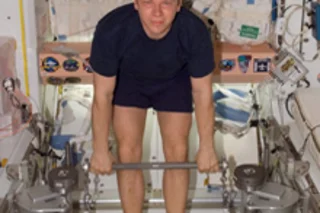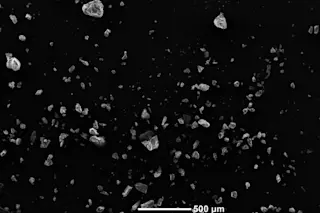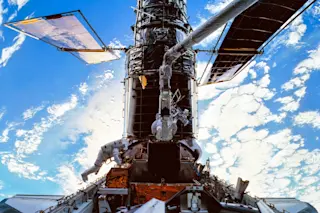Astronauts who live aboard the International Space Station for months are losing more muscle mass and strength than researchers thought, and NASA thinks there's only one cure: a better workout. A new study that used MRI scans and biopsies to test astronauts' muscles before and after a stay at the space station found that the volume of their calf muscles
decreased by an average of 13 percent during six months in space.... [Lead researcher Scott] Trappe says that the magnitude of loss in muscle mass is akin to the difference between a 25-year-old and an 80-year-old [Scientific American].
Leg muscles are the most vulnerable to atrophy, researchers say, because on Earth they receive constant exercise just by supporting a person's weight.
Space station residents currently exercise at least two hours each day to prevent their muscles and bones from wasting away in the weightless microgravity environment. The recent study showed ...














